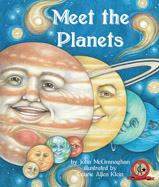Alignment to Standards for SD

| Grade | Number | Standard |
|---|---|---|
| 1 | SC-1.E.2.0. | what can be observed in the sky by the unaided eye in the day and at night. Sun, Moon, stars, clouds, etc. |
| 2 | SC-2.E.2.0. | basic components of space: sun, moon, planets, stars |
| 3 | SC-3.E.2.1. | Students are able to identify the Earth as one of the planets that orbits the Sun. |
| 3 | SC-3.E.2.1.a | All planets orbit the Sun. |
| 3 | SC-3.E.2.2. | Students are able to recognize changes in the appearance of the Moon over time. |
| 3 | SC-3.E.2.2.a | Know that the Moon does not change shape, but at different times appears to change shape. |
| 4 | SC-4.E.2.1.b | Use terminology to describe the phases of the Moon. |
| 4 | SC-4.E.2.1.c | Describe relative size and position of moons, planets, and stars. |
| 4 | SC-4.E.2.1.d | characteristics of the planets: appearance, size, distance from the Sun |
| 5 | SC-5.E.2.1. | describe the components (Sun, planets, and moons) of the solar system. |
| 5 | SC-5.E.2.1.a | Relative size of planets and Sun |
| 5 | SC-5.E.2.1.b | Order and relative distance from the Sun and each other |
| 5 | SC-5.E.2.1.c | relative scale of the Earth to the Sun, planets, and the Moon. |
| 5 | SC-5.E.2.2.b | Apparent brightness of a star depends in part upon its distance from the Earth. |
| 5 | SC-5.S.1.1. | Students are able to identify scientific changes that have affected transportation, health, sanitation, and communication. |
| K | SC-K.E.1.1. | describe simple Earth patterns in daily life. E.g. weather observations, seasons, night and day |